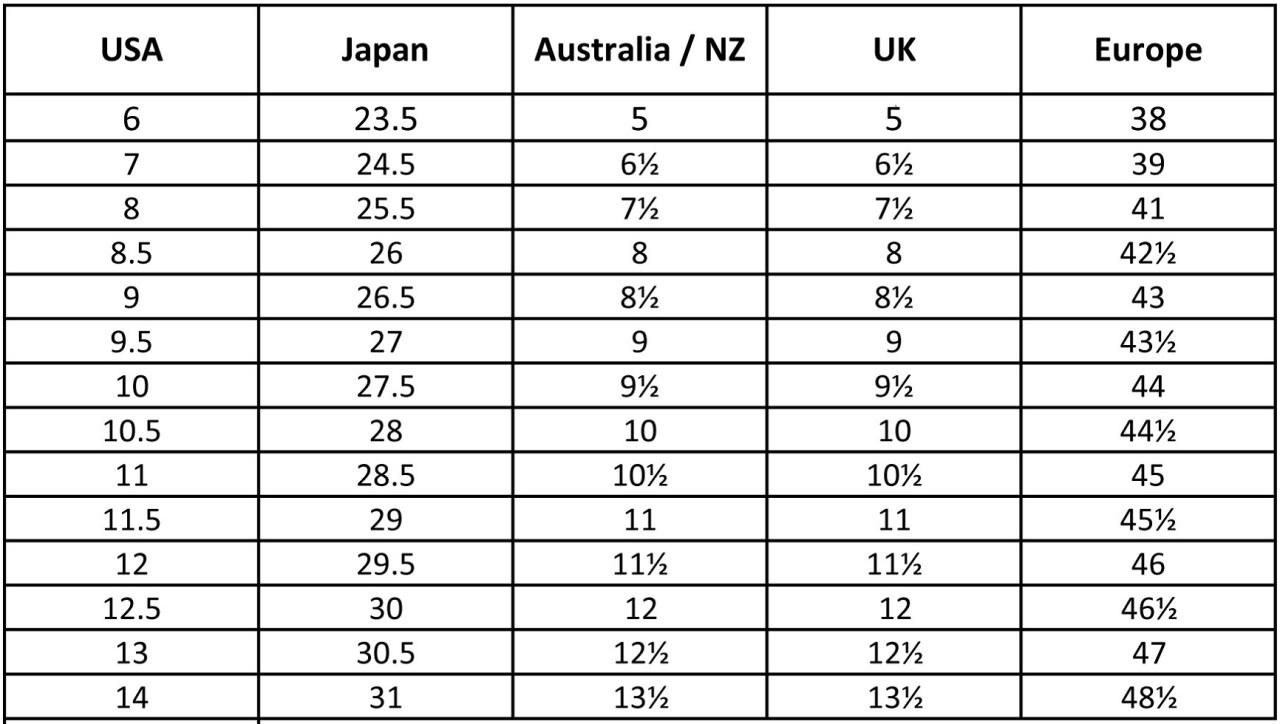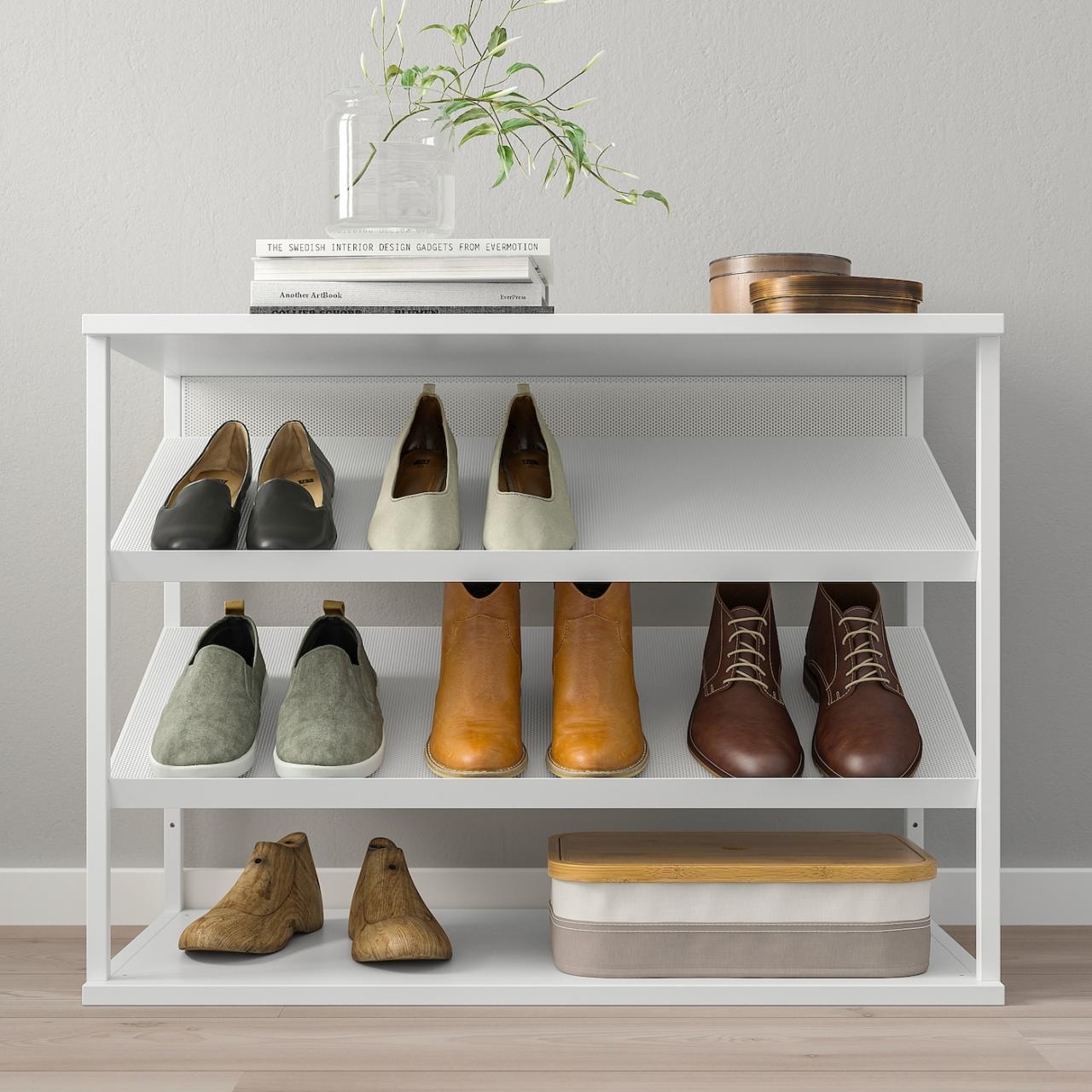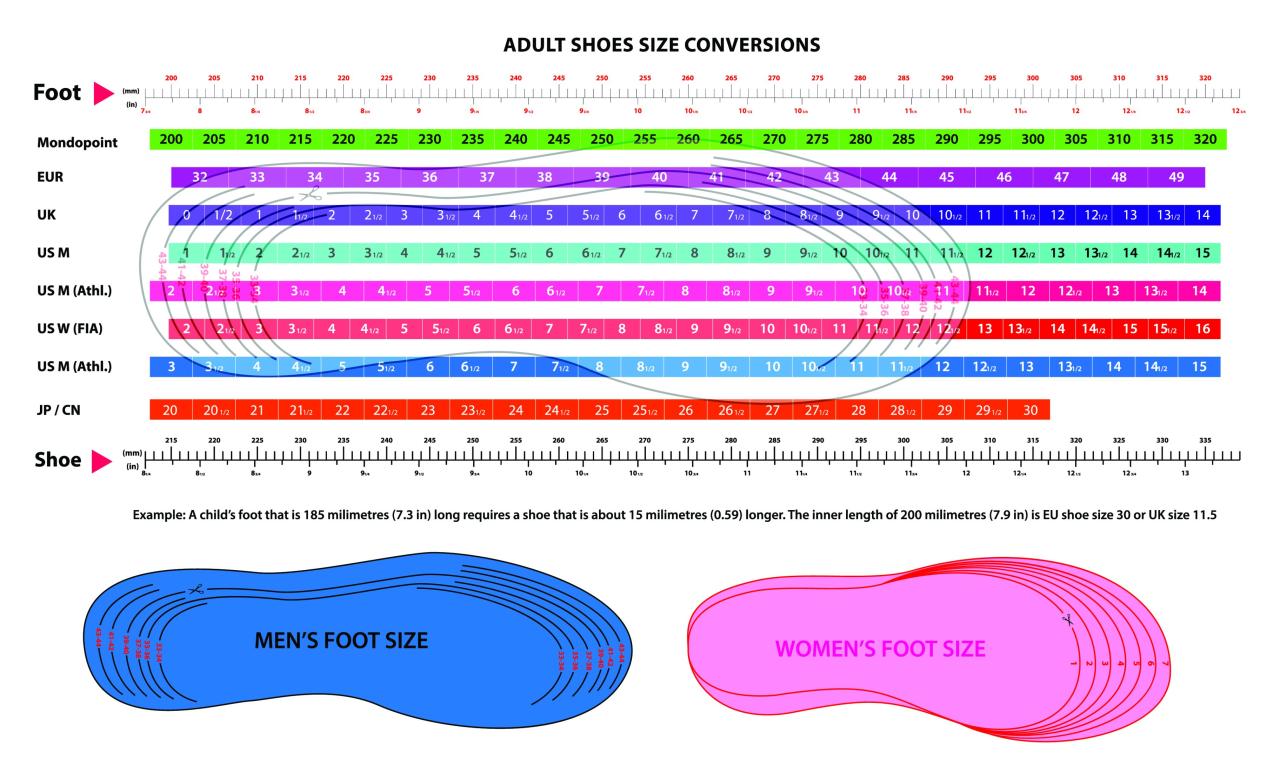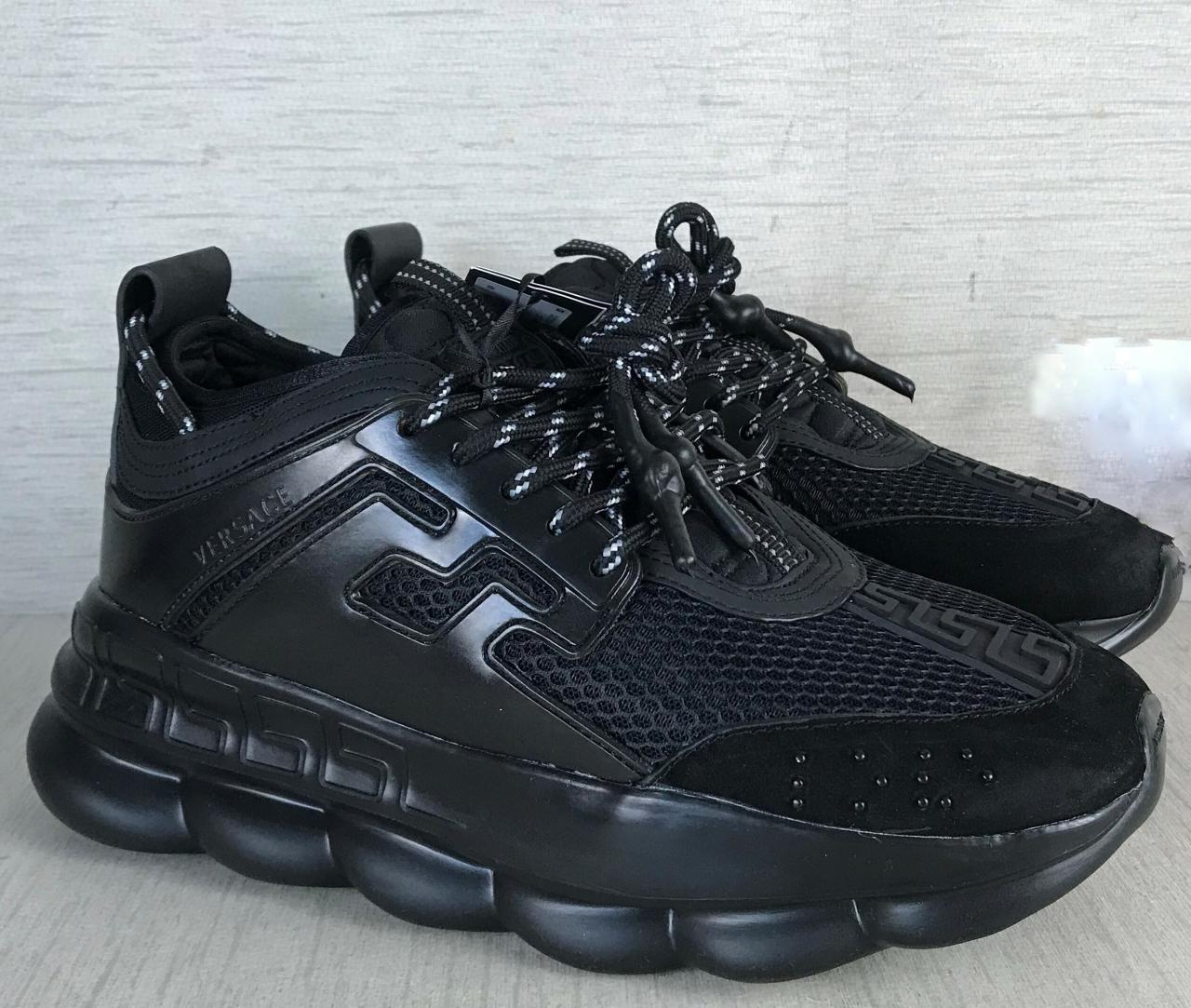Shoe Size Chart: Navigating the world of footwear can be a confusing experience, especially when trying to find the perfect fit. Shoe size charts are essential tools for ensuring comfortable and properly fitting shoes, regardless of your location or shoe style.
They offer a standardized system for converting shoe sizes across different measurement systems, allowing you to find the right size, whether you’re shopping online or in a physical store.
Understanding how shoe size charts work and the factors that influence shoe size is crucial for making informed decisions about your footwear. From the different measurement systems used globally to the specific information included on each chart, we’ll explore the intricacies of shoe sizing and equip you with the knowledge to find the perfect fit for your feet.
Shoe Size Charts: A Guide to Finding the Perfect Fit

Navigating the world of shoe sizes can be a confusing experience, especially with the various measurement systems and variations across brands. This comprehensive guide will equip you with the knowledge and tools to understand shoe size charts, find the perfect fit, and ensure comfortable and supportive footwear.
Shoe Size Chart Overview
Shoe size charts are essential tools for determining the correct shoe size for individuals. They serve as a standardized reference system, translating foot measurements into corresponding shoe sizes.
- Purpose:Shoe size charts help individuals find the right shoe size, ensuring a comfortable and supportive fit.
- Global Variations:Different regions and countries employ unique shoe size charts, reflecting variations in measurement systems and sizing conventions. For example, the US, UK, and EU utilize distinct size scales, while some Asian countries may use centimeters (CM).
- Significance:Accurate shoe size charts are crucial for preventing foot discomfort, blisters, and other issues associated with ill-fitting footwear.
Understanding Measurement Systems
Shoe sizes are measured using different systems worldwide. Understanding these systems is essential for accurate conversions and finding the right fit.
- US System:The US system uses numerical values for shoe sizes, with separate scales for men, women, and children. Sizes increase in increments of half a size.
- UK System:The UK system is similar to the US system but employs slightly different sizing scales. It is often used in the UK and some Commonwealth countries.
- EU System:The EU system utilizes a numerical scale that typically aligns with centimeter (CM) measurements. This system is commonly used across Europe.
- CM System:The CM system directly measures foot length in centimeters. This system is frequently used in Asia and is considered a more precise measurement.
Converting between these systems can be complex, requiring specific conversion charts or online tools. It’s important to note that conversion tables may not always be accurate due to variations in shoe brands and styles.
Shoe Size Chart Anatomy

A typical shoe size chart includes key components that provide essential information for determining the correct shoe size. These components are organized in a clear and logical manner.
- Gender:Shoe size charts often separate sizes for men, women, and children, as foot shapes and sizes vary significantly across genders.
- Size:This column lists the corresponding shoe size in the chosen measurement system (e.g., US, UK, EU, CM).
- Length:This column indicates the foot length in centimeters (CM) that corresponds to each shoe size.
- Width:Some charts may include a column for foot width, which can be measured in centimeters or using a specific width code (e.g., B, D, EE).
Factors Influencing Shoe Size
Several factors influence shoe size, including age, gender, foot shape, and foot length. These factors contribute to variations in shoe sizing and should be considered when choosing the right fit.
- Age:Foot size increases as children grow, requiring frequent adjustments in shoe size. Adults’ feet typically stabilize in size after adolescence.
- Gender:Women’s feet tend to be narrower and shorter than men’s feet, resulting in different shoe size scales.
- Foot Shape:Variations in foot shape, such as high arches or flat feet, can influence the ideal shoe size.
- Foot Length:Foot length is the primary determinant of shoe size, as it directly corresponds to the length of the shoe.
Finding the Right Shoe Size
Determining the correct shoe size involves measuring your foot length and width accurately and consulting a shoe size chart.
- Step 1:Measure your foot length by placing your foot firmly on a piece of paper with your heel against a wall. Mark the end of your longest toe. Measure the distance from the wall to the mark in centimeters (CM).
- Step 2:Measure your foot width at the widest point, which is usually across the ball of your foot.
- Step 3:Consult a shoe size chart that aligns with the measurement system you prefer. Find the row that corresponds to your foot length measurement.
- Step 4:The shoe size listed in the corresponding row is your ideal size. If your foot width is wider than average, consider choosing a wider shoe size or a shoe with adjustable width options.
Importance of Shoe Fit
Wearing ill-fitting shoes can lead to discomfort, foot pain, and even injuries. A proper shoe fit is crucial for maintaining foot health and well-being.
- Consequences of Ill-fitting Shoes:Ill-fitting shoes can cause blisters, corns, calluses, hammertoes, and plantar fasciitis.
- Tips for a Comfortable Fit:Ensure the shoe is long enough to allow for a thumb’s width of space between your longest toe and the end of the shoe. The shoe should fit snugly around your heel and midfoot, but not feel tight or constricting.
Shoe Size Charts for Specific Needs
Specialized shoe size charts are designed for specific needs, such as athletes, children, and individuals with unique foot conditions.
- Athletes:Athletes may require specific shoe sizes that accommodate their sport and provide optimal support and stability.
- Children:Children’s feet grow rapidly, requiring frequent shoe size adjustments. Specialized children’s shoe size charts account for this growth.
- Foot Conditions:Individuals with foot conditions, such as bunions or flat feet, may need specialized shoe sizes or orthotics to provide comfort and support.
Final Summary
Finding the right shoe size isn’t just about avoiding blisters and discomfort; it’s about ensuring proper support, alignment, and overall foot health. By understanding the factors that influence shoe size, utilizing accurate measurement techniques, and paying attention to the nuances of shoe fit, you can confidently navigate the world of footwear and enjoy a comfortable and enjoyable experience with every step you take.













